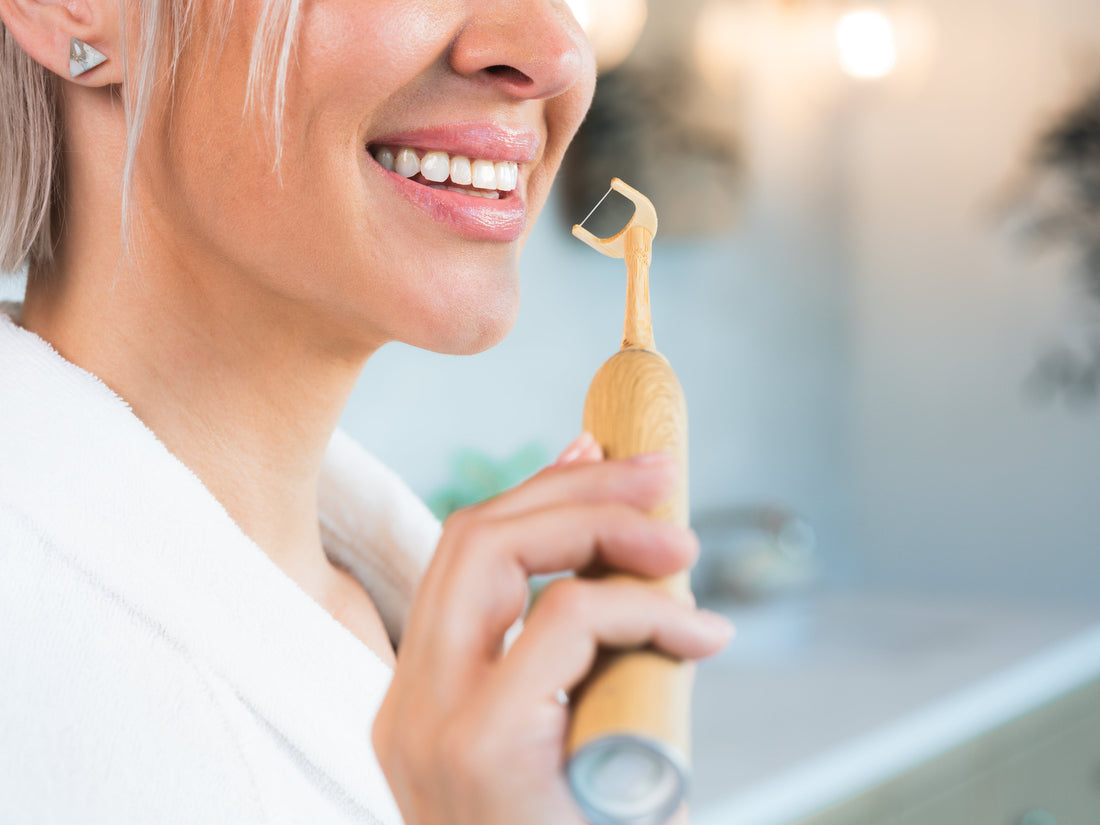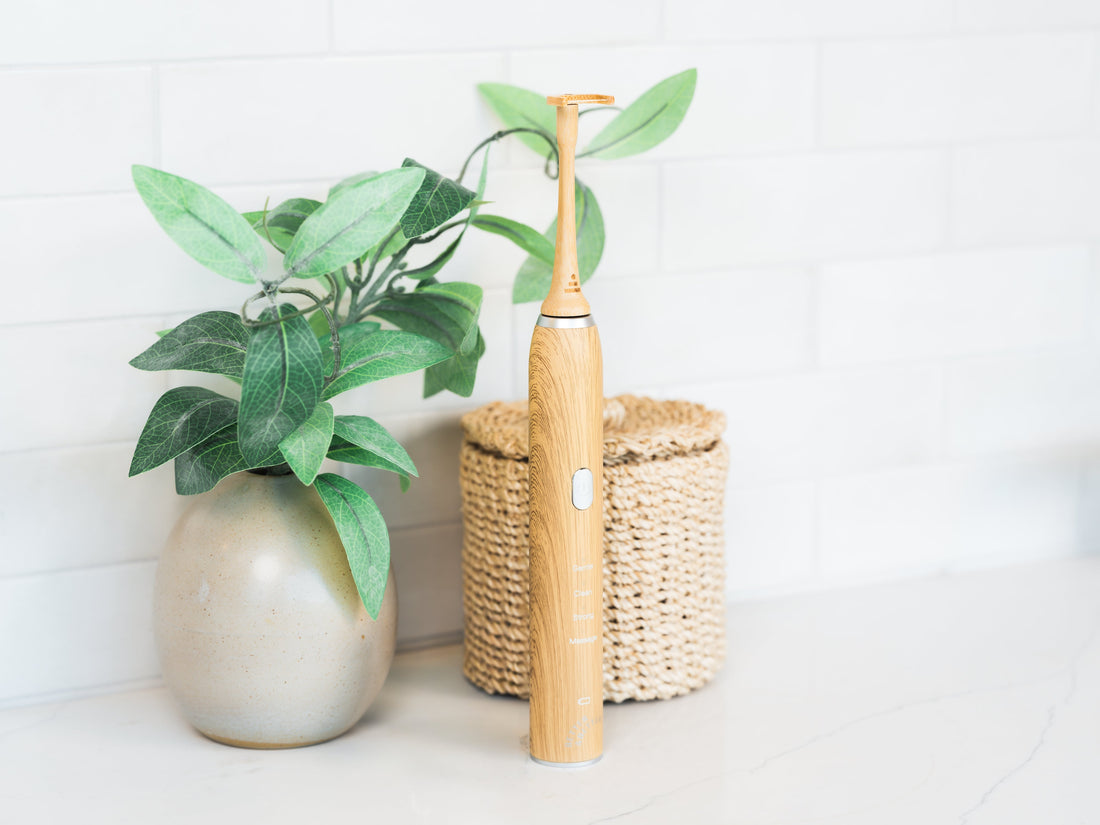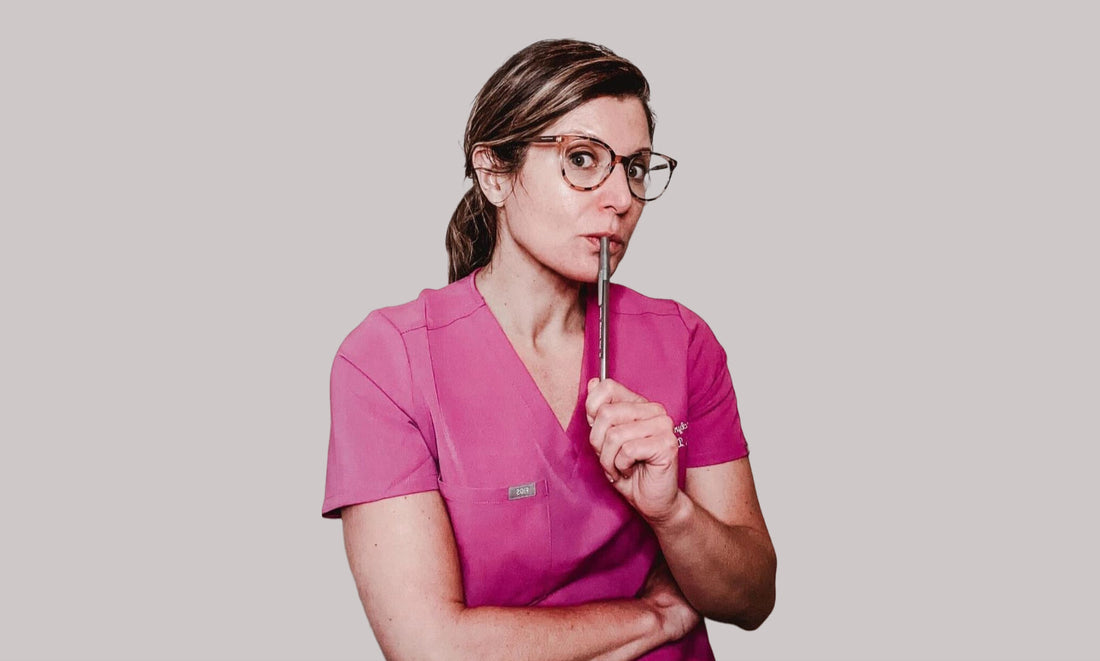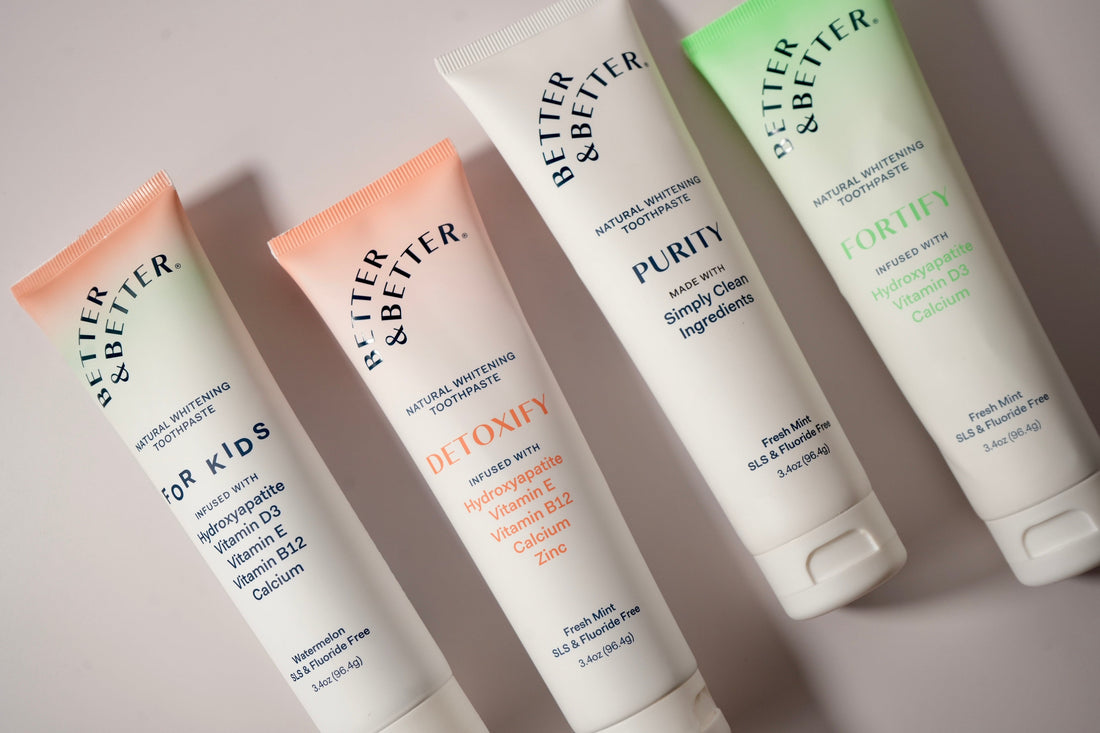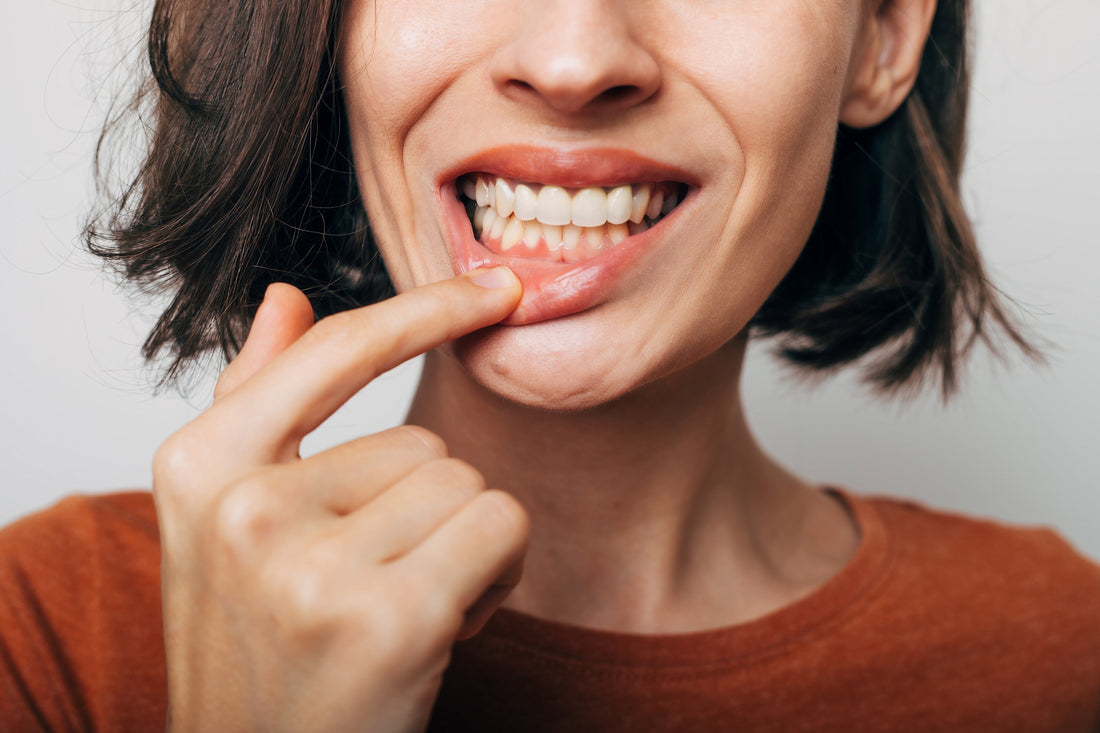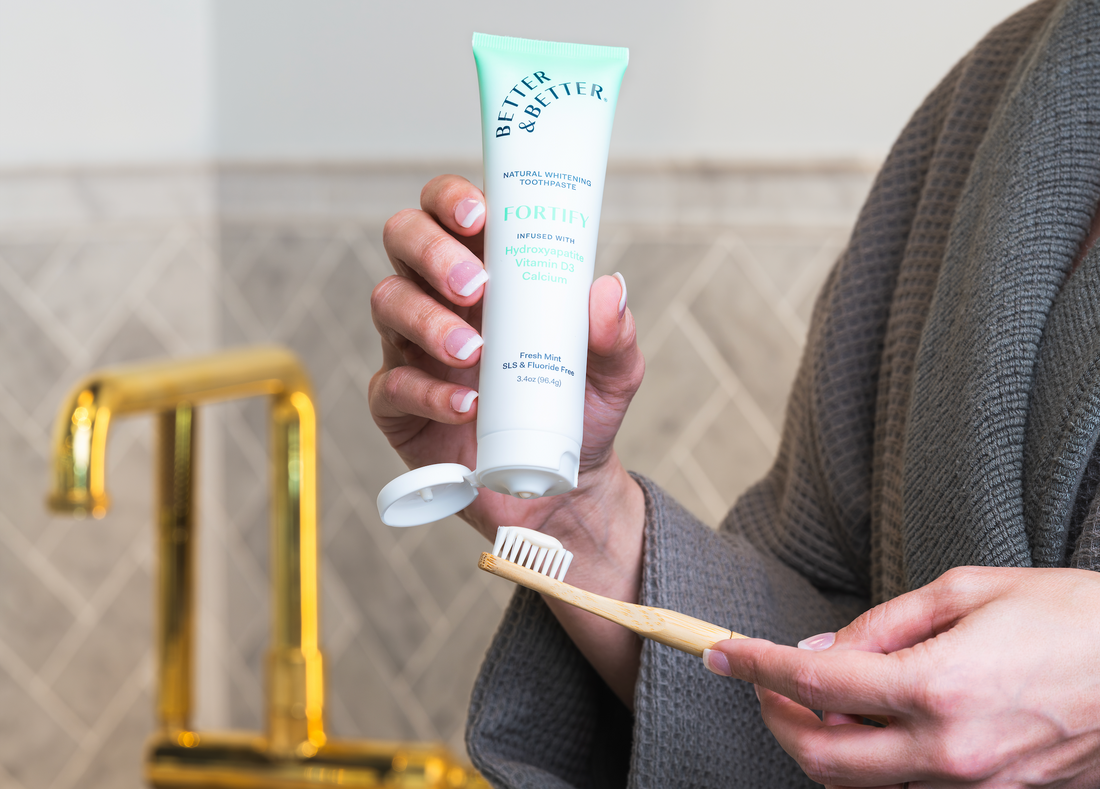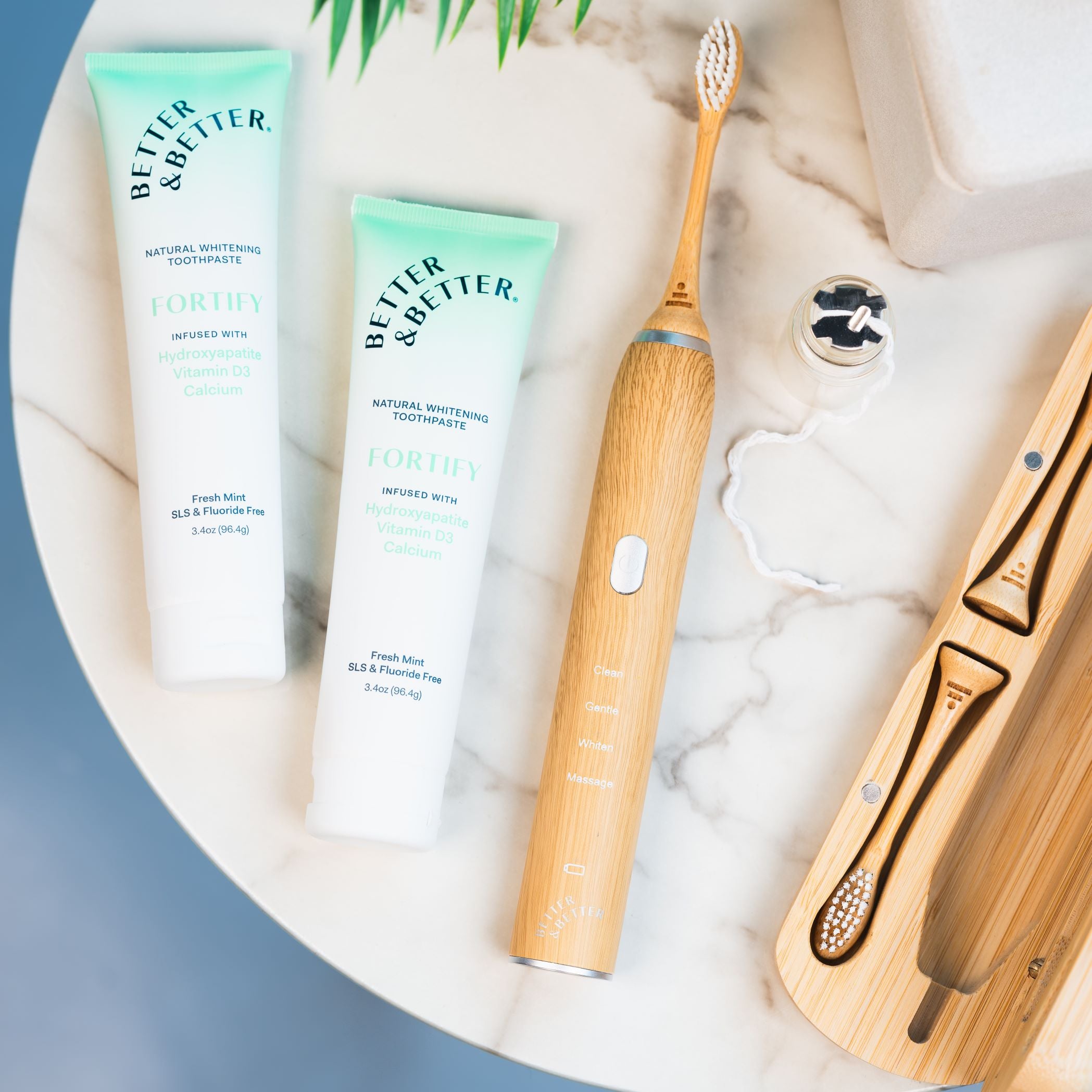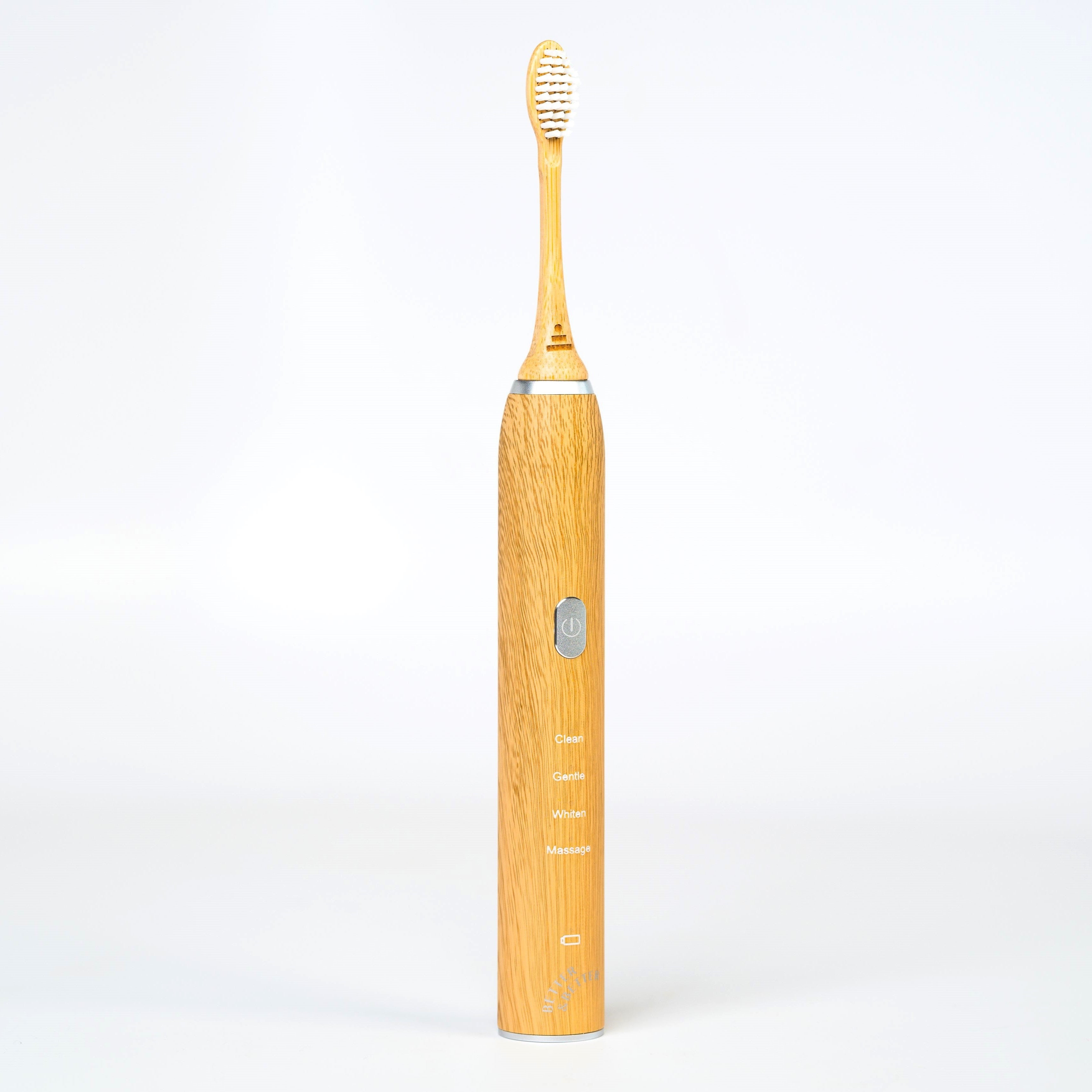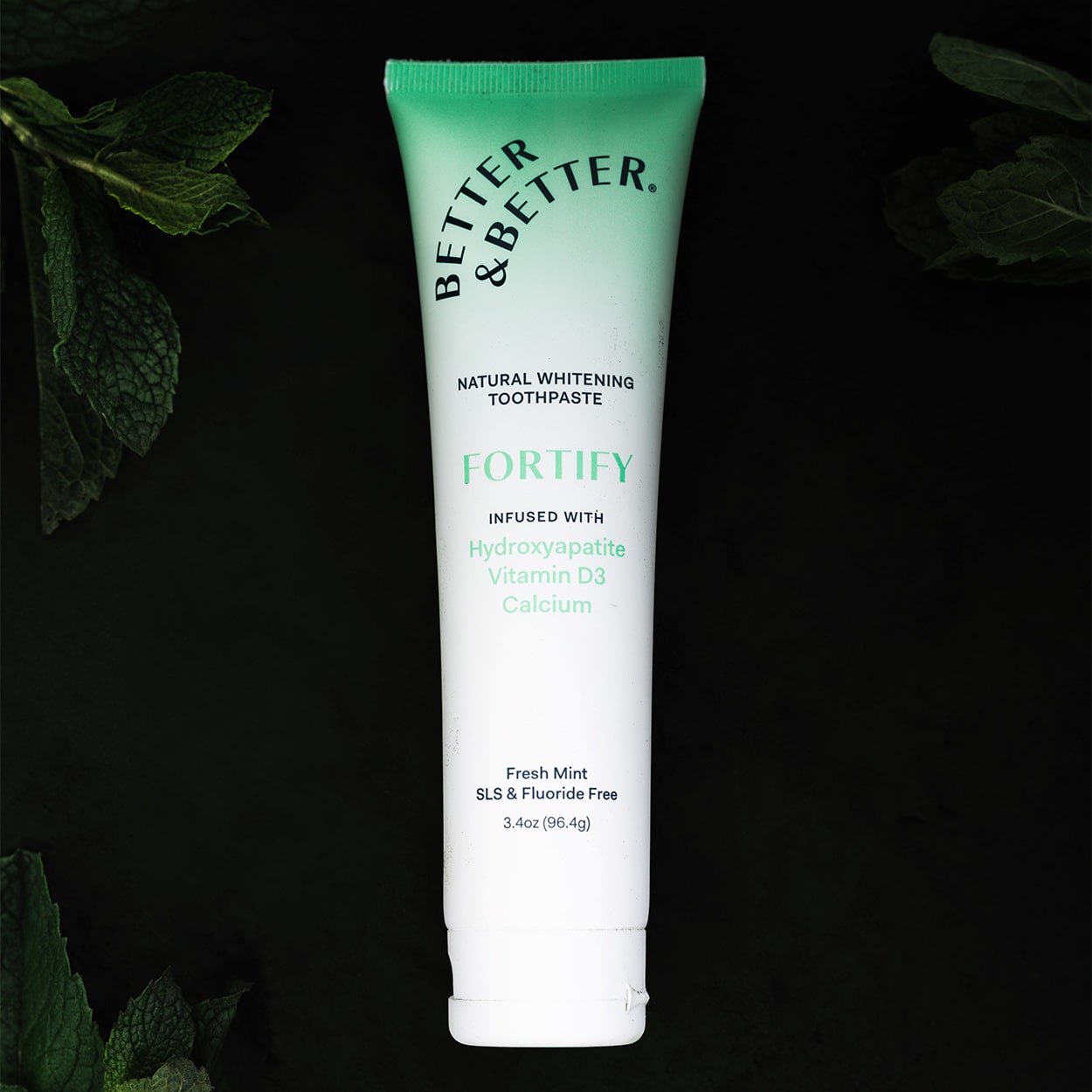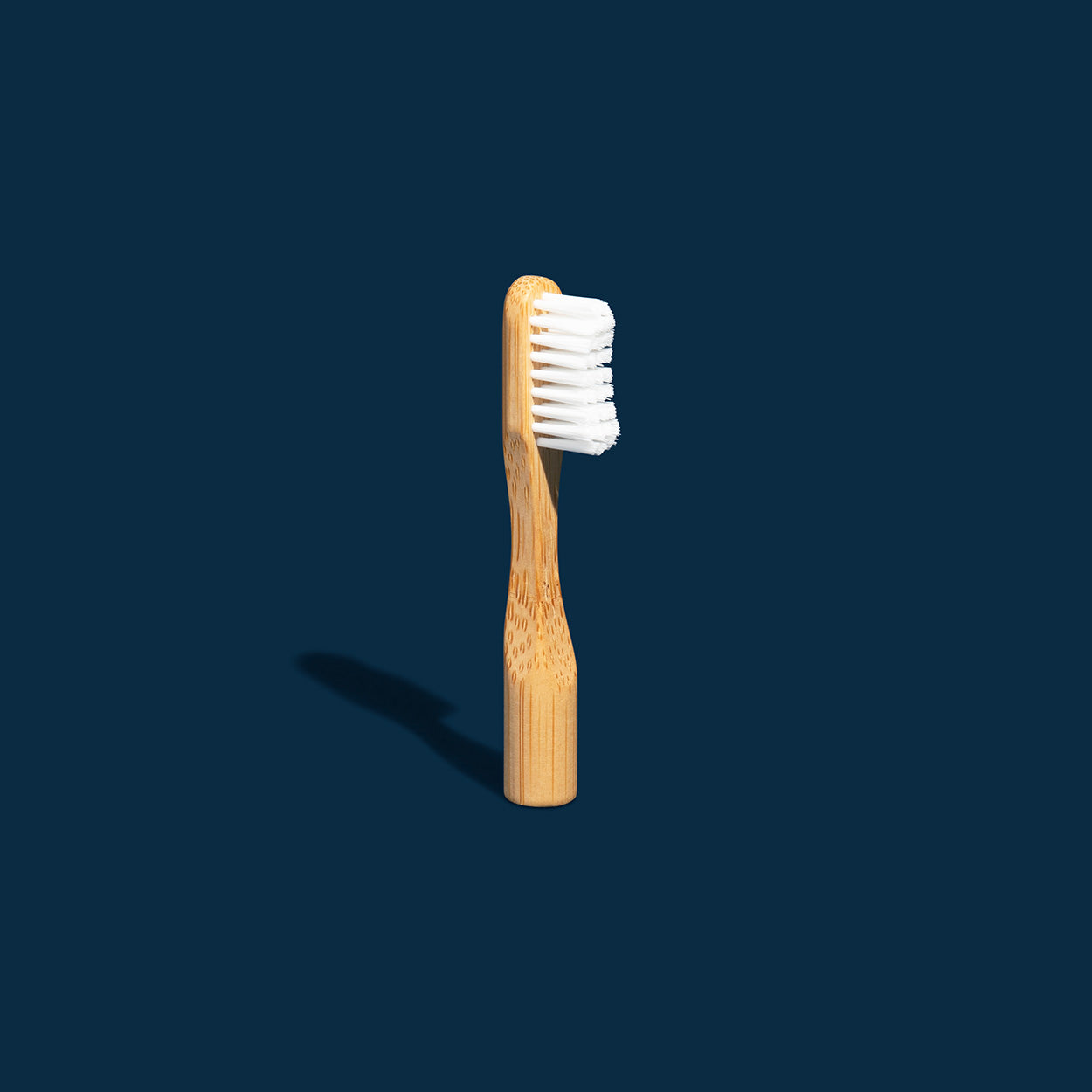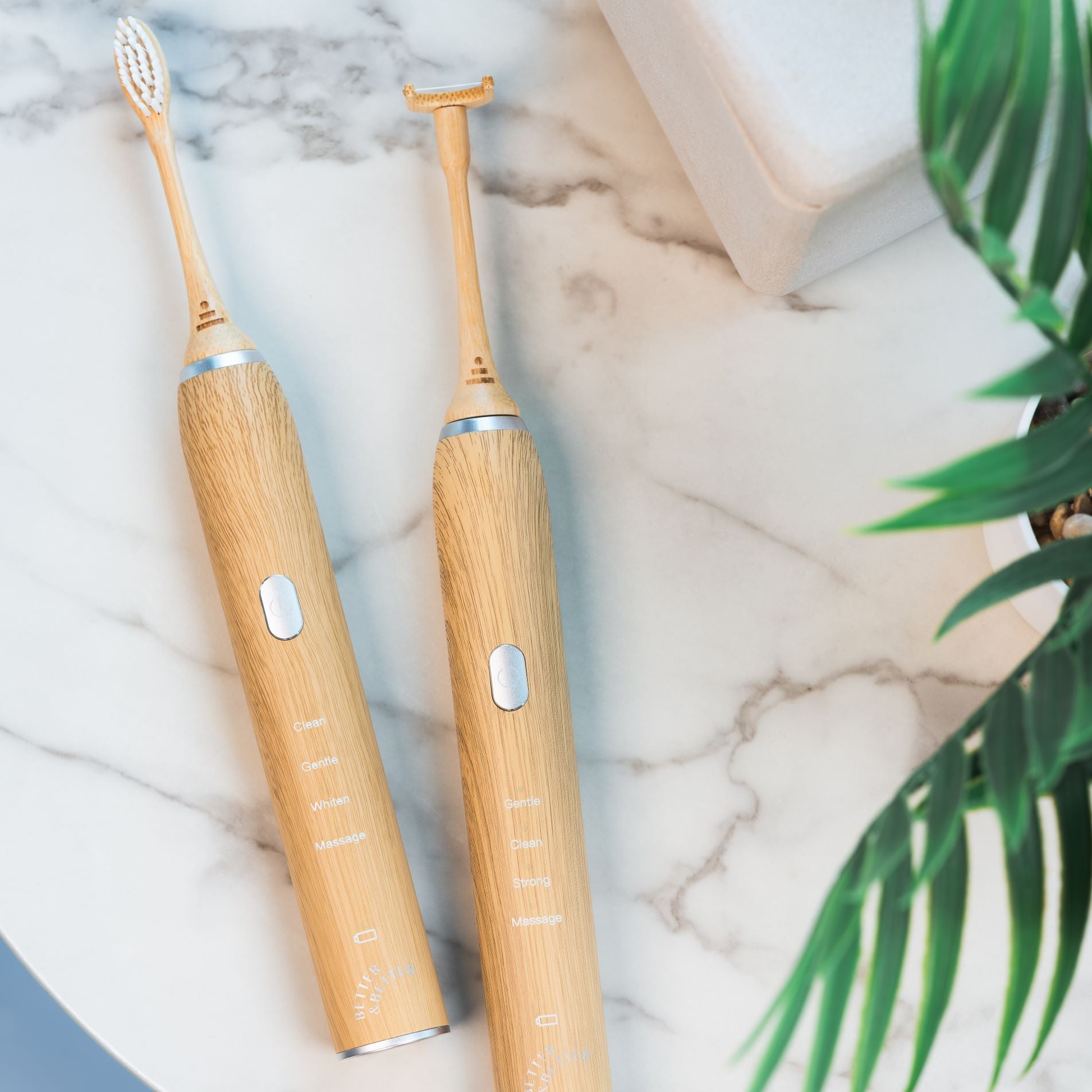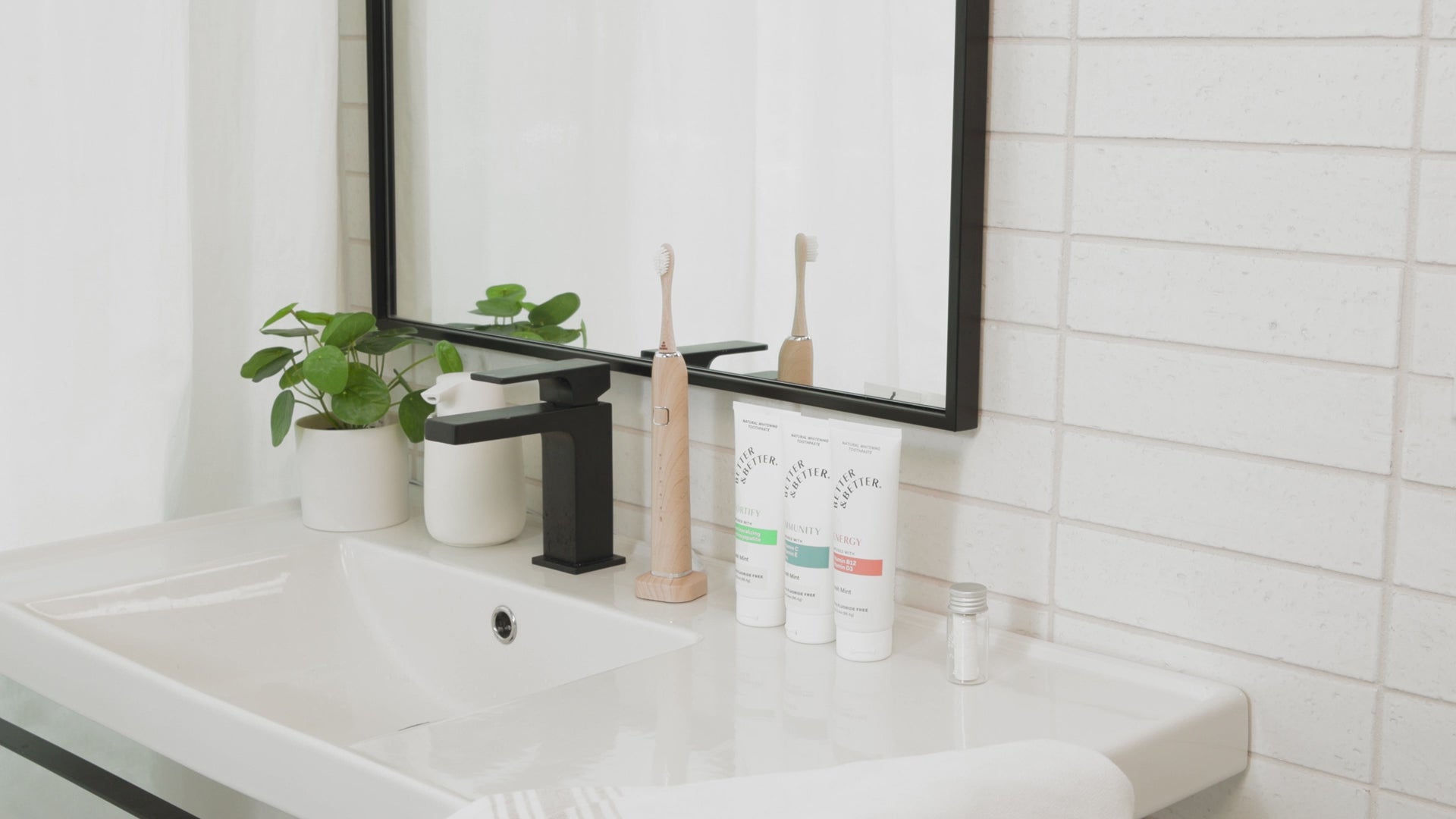
FEEL BETTER, FOREVER
Our co-founder, Vladimir Vukicevic, shares the personal journey that led him to launch Better & Better with a big ambition.
OUR FOUNDING TEAM

Vladimir VukicevicCo-founder & CEO
"Long before clean and organic products were accessible, I recognized the need for products that are better for our health. With Better & Better, I set out to create products that make it easy to improve your habits and health."

Mary CostaCo-founder & Marketing Advisor
"Ditching traditional oral care decades ago transformed my oral health-I love that Better & Better is taking it to the next level by optimizing foundational habits with a focus on whole-body health and earth-friendly choices."

Jerry HuCo-founder & COO
"With years of experience in consumer goods and food & beverage supply chain, l'm passionate about creating high-quality products for our health, while being responsible to the planet.
Step-by-step, we're making the best choices today, and better tomorrow."
OUR PURPOSE, OUR PROMISE:BETTER FOR YOU, BETTER FOR THE PLANET

OUT WITH THE BAD
From toxins and harsh soaps to polluting plastics, oral care was long overdue for an upgrade. You don’t need harsh ingredients for a healthy smile, so we said no to sodium lauryl sulfate (SLS), fluoride, parabens, GMOs, artificial flavors, colors, and preservatives—forever.
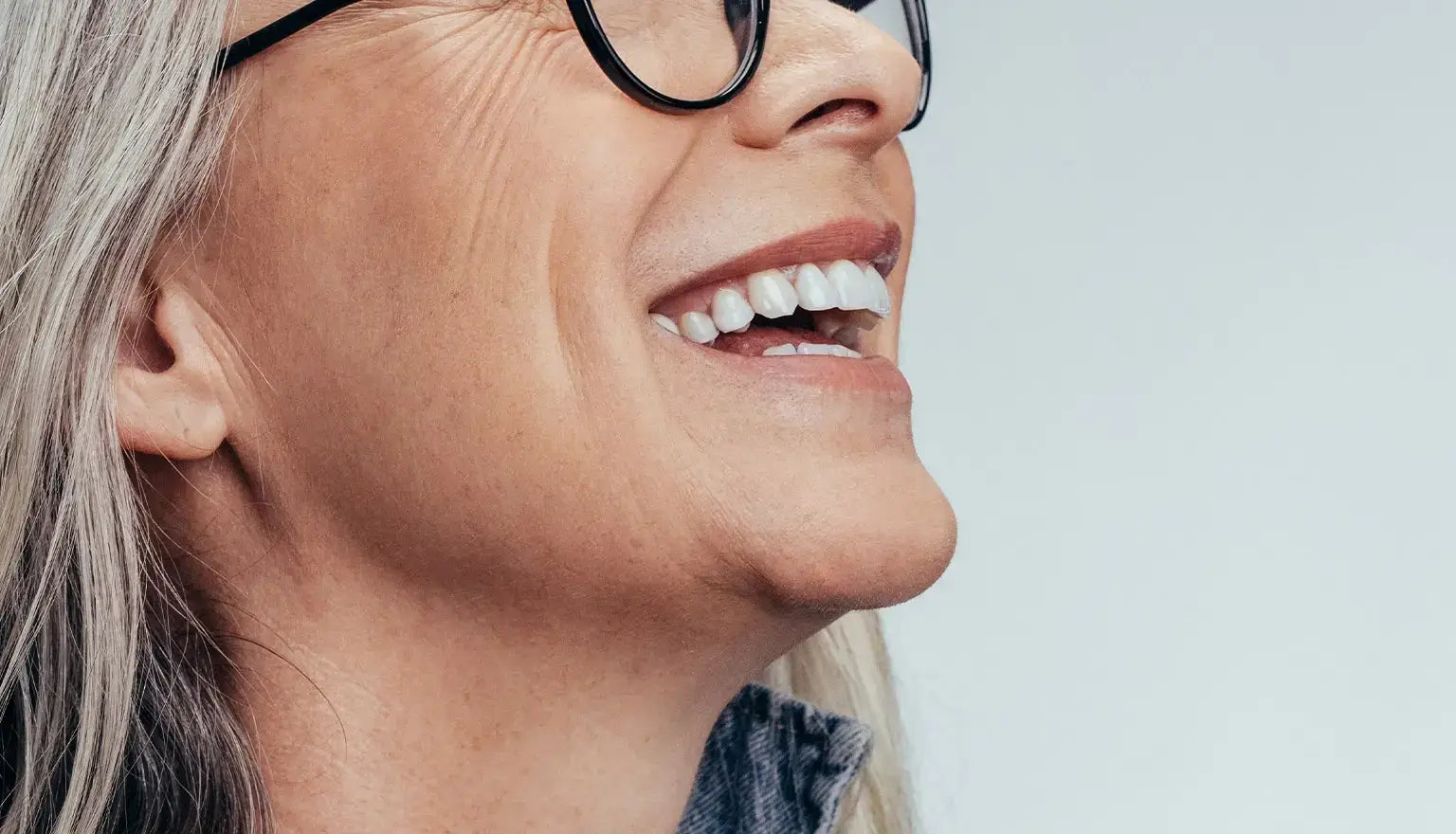
IN WITH THE BETTER
Better means simple, safe, science-backed oral health essentials that support whole-body health. Our dentist-approved formulas are 100% vegan with clean ingredients you recognize.

& BETTER FOR THE PLANET
To minimize our impact on the planet, we prioritize earth-friendly materials and natural ingredients, ensuring our products and packaging are better for the planet. We meet the strictest EWG (Environmental Working Group) standards and package in recyclable, eco-friendly materials to eliminate waste.
Even better—every subscription purchased results in a tree planted by One Tree Planted: a non-profit committed to global reforestation.
OUR RESIDENT EXPERTS
Our resident doctors, nutritionists, and scientists guide our approaches to cutting-edge research and product innovation.

Dr. Buddhadev Paul ChaudhuriyPhD, Biomedical Electrical Engineer
The CEO and Co-founder of Keylika, a startup developing metallodrugs to treat unmet medical needs. He has a PhD with a specialization in biomedical microsystems, focused on transdermal drug delivery devices.

Lisa WindfieldCertified High Performance Coach
With a background in holistic health and meditation, she also coaches with Tony Robbins and leads meditations and training for companies such as the Boston Consulting Group.

Dr. Mark NeveuPhD, Environmental Toxicology& Experimental Oncology
Dr. Neveu develops and commercializes innovative, clean label delivery systems that support a healthy microbiome. His work has resulted in well over 50 drugs, biologics, and natural health product formulations that have been commercialized for 20 years.

Dr. Jaclyn TomsicMD, DMD, FACS, Oral and maxillofacial surgeon
A board-certified Oral and maxillofacial surgeon (OMF) based out of Cleveland, OH, Dr. Tomsic is qualified oral health expert trained to treat conditions, defects, injuries, and esthetic aspects of the mouth, teeth, jaw, and face.
FOLLOW US
Let us be your guide on the way to Better & Better. We promise whimsy and wisdom
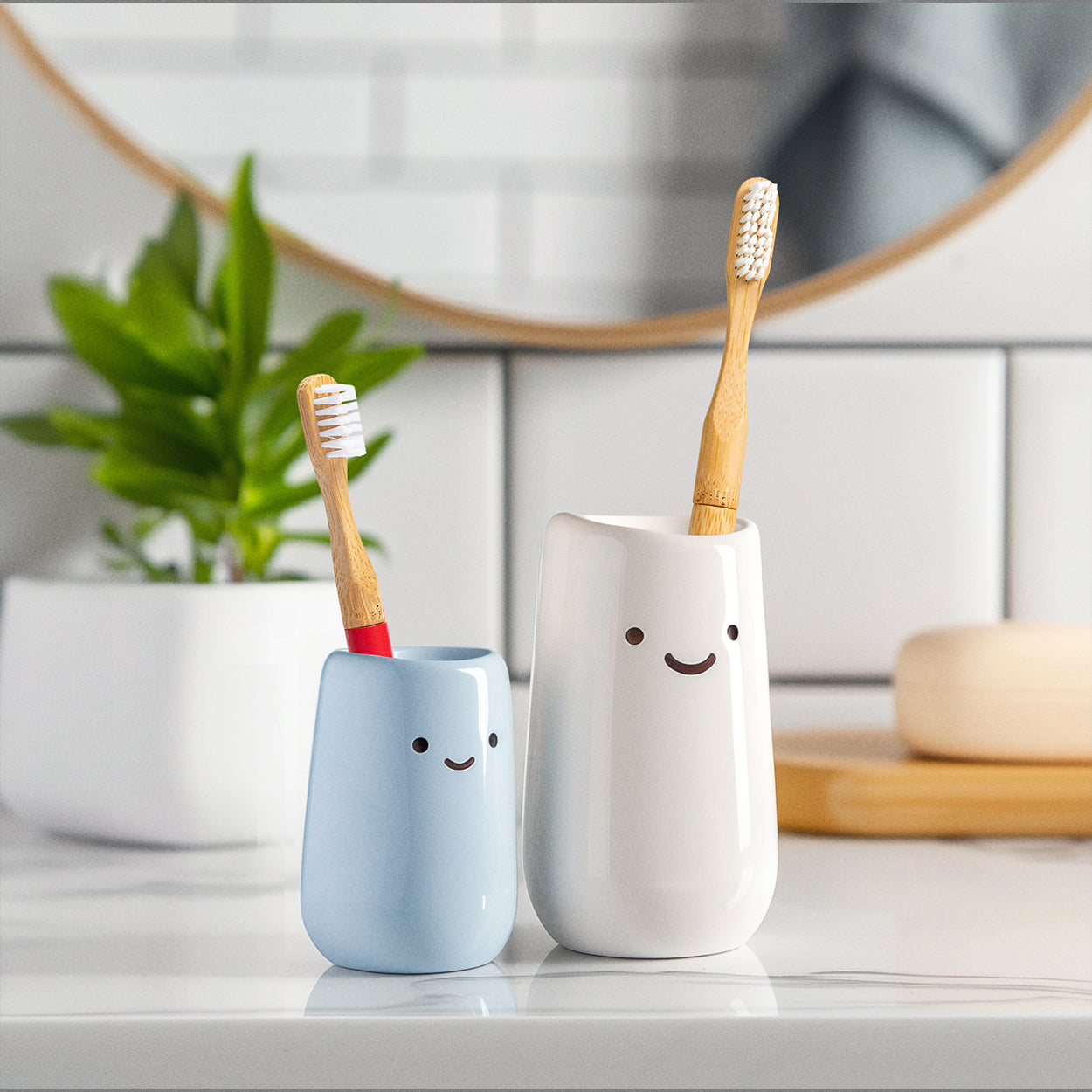

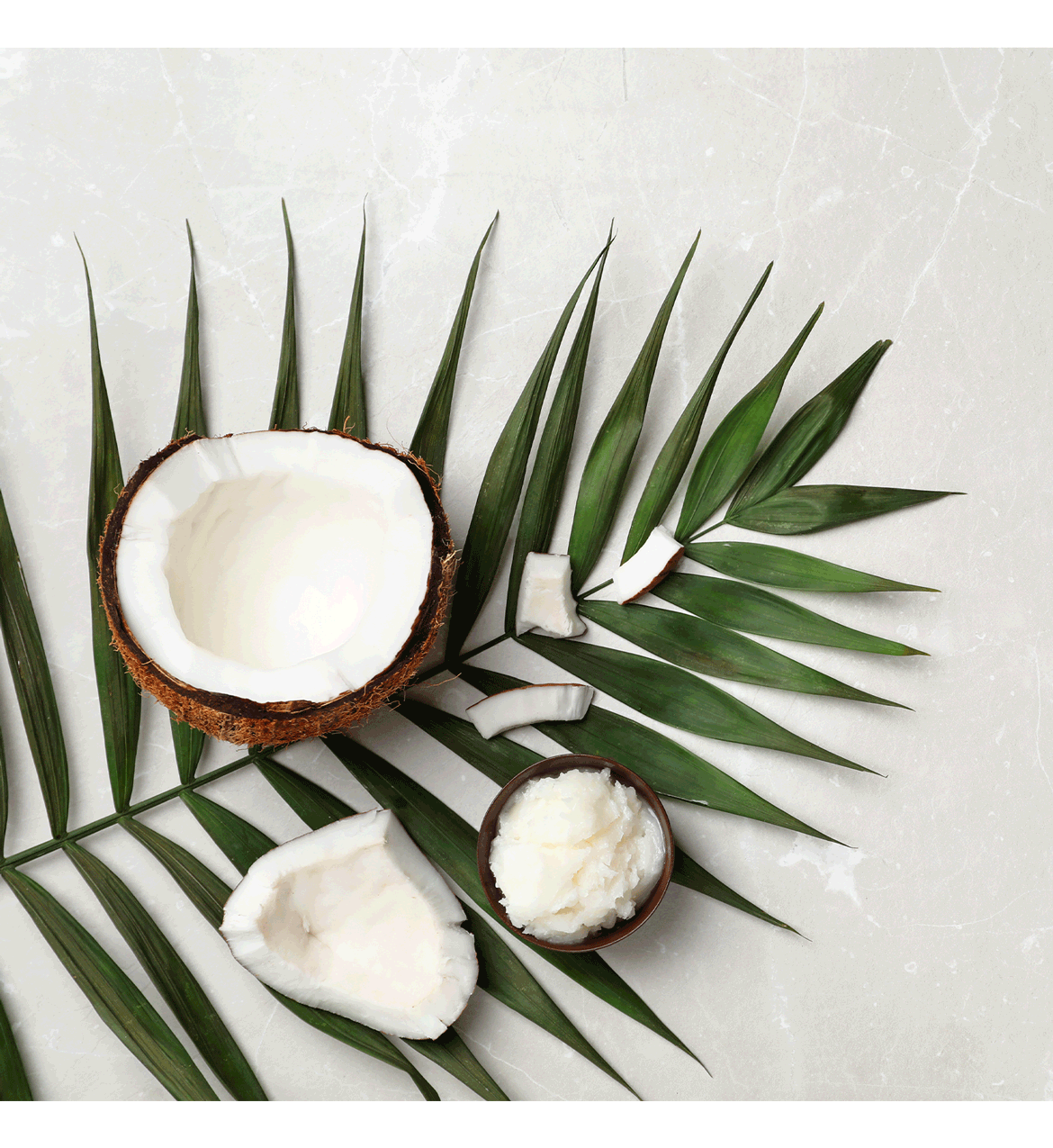
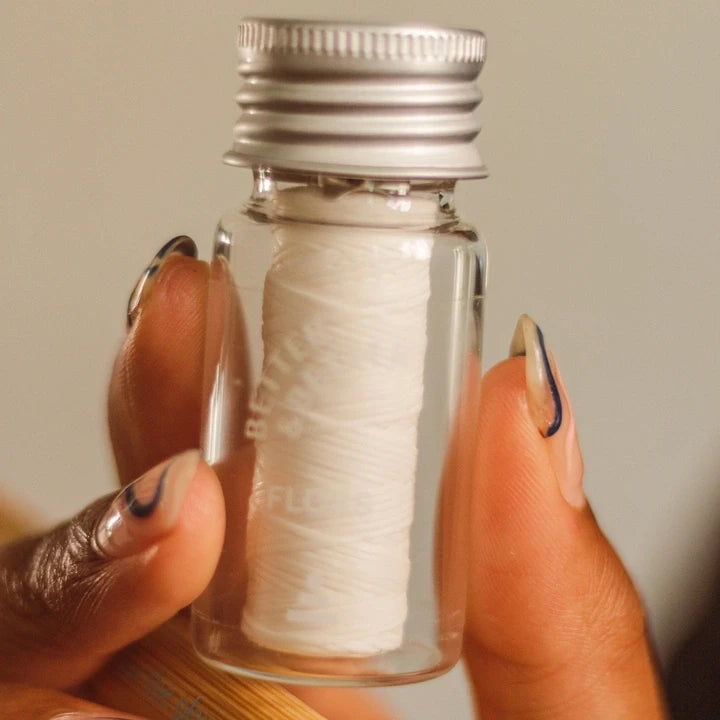

READY TO LEARN MORE?
Is Flossing the Secret to Clearer Skin?
You floss to clear out plaque and erase the evidence of the kale salad you had for lunch. But flossing doesn’t just clear out the nooks and crannies in your mouth—it can help clear up your skin too. Our mouths are like a window into the rest of the body. The health of your gums and teeth doesn’t stop at your smile; it ripples outward, influencing everything from cardiovascular wellness to—you guessed it—your complexion. Good oral care habits aren’t just about avoiding cavities or keeping your dentist happy. They may play a role in reducing inflammation that contributes to breakouts. Ahead, we’ll break down the fascinating science linking oral health to skin health, show you how daily flossing might help keep acne at bay, and introduce a new way to make this ritual faster, easier, and a whole lot better for the planet. The Link Between Oral Health and Skin Health Your mouth isn’t just teeth and gums—it’s home to a full-blown microbiome: billions of microorganisms working together (or sometimes against each other). When this microbiome is balanced, it protects you. When it’s not, inflammation kicks in, and that inflammation doesn’t always stay local. Recent research has begun connecting the dots between oral health and skin health. One study published in the Journal of Clinical and Aesthetic Dermatology suggests a possible link between periodontal bacteria and acne lesions. The reasoning is simple: when oral bacteria run unchecked, they can trigger inflammatory responses in the body. That inflammation can then show up elsewhere, like in the form of breakouts on your skin. While the science is still emerging, more and more evidence points to the fact that your gums and your skin are part of the same larger story. Neglect one, and you might see the consequences in the other. How Flossing Can Keep Your Skin Clear At its most basic, flossing is about cleaning where your toothbrush can’t reach. But on a bigger scale, it’s about reducing the bacteria and inflammation that thrive in those tiny hidden spaces. Skip flossing, and bacteria builds up, gums get irritated, and low-grade inflammation sets in. Skin conditions like acne are also closely tied to inflammation. So by reducing gum inflammation through daily flossing, you may also be cutting down on the systemic inflammation that can aggravate breakouts. Think of flossing as the foundation of your health routine. Just like moisturizer locks in hydration for your skin, flossing keeps bacteria in check for your mouth. The result? Not just healthier gums, but potentially healthier skin too. Flossing: The Skincare Step You Didn’t See Coming When we think about skincare, we usually picture serums, cleansers, or the latest TikTok mask. But the truth is, a glowing complexion starts earlier in the routine—sometimes as early as flossing. That’s why we reimagined this often-skipped step with our Bamboo Sonic Flosser: the world’s first biodegradable sonic flosser. We wanted to take everything good about flossing (plaque removal, gum health, inflammation reduction) and make it faster, smarter, and easier to stick with—while cutting down on the plastic waste that comes with traditional flossers. Here’s why it belongs in both your oral care and your skincare routine: Plastic-free where it counts: Biodegradable bamboo heads and castor bean oil floss.Five times faster than traditional flossing: Because the best routine is the one you’ll actually keep. 14,000 sonic vibrations per minute: A deep yet gentle clean that sweeps away plaque comfortably. It’s everything you want from flossing—effective, sustainable, and seamlessly built into your routine.
Meet the World’s First Bamboo Sonic Flosser
We built Better & Better to rethink the everyday rituals most of us take for granted. From vitamin-infused toothpaste to biodegradable toothbrushes, we’ve reimagined the small daily habits that add up to a lifetime of impact. Now, it’s flossing’s turn. Today, we unveiled our Bamboo Sonic Flosser: the world’s first biodegradable electric flosser. It sweeps away plaque at sonic speed, minus the plastic waste that usually comes with it. After plenty of testing (and more than a few floss sessions ourselves), we’re thrilled to share how it works, why it matters, and why it just might become your favorite part of your routine. Meet the Bamboo Sonic Flosser Many electric flossers do a decent job, but they rely on plastic heads that pile up in landfills. We knew there had to be a better way. We reimagined our Bamboo Sonic Flosser from the ground up, fusing efficiency and sustainability in one smart design: Biodegradable bamboo heads paired with castor bean oil floss—plastic-free where it counts 14,000 vibrations per minute to sweep away plaque quickly and comfortably Four cleaning modes (Gentle, Clean, Strong, Massage) so you can choose your perfect pressure It’s waterproof, just in case you’re the kind of person who likes flossing in the shower Ergonomic handle that makes reaching back molars easy, designed for ages 8+ The result? An electric flosser that’s as kind to your mouth as it is to the planet. 4 Benefits of the Bamboo Sonic Flosser On the fence about this flosser? Here are four reasons it deserves a spot on your counter. 1. Sustainability Every bamboo head is biodegradable, and the floss itself is made from castor bean oil. Less waste, more peace of mind. 2. Efficiency With 14,000 sonic vibrations per minute, it’s up to five times faster than traditional flossing. That’s a deep clean in a fraction of the time. 3. Comfort Slim bamboo heads and gentle sonic motion help the floss glide smoothly between even the tightest spaces—no tugging, no forcing. 4. Customization Not every mouth is the same, and neither is every flossing session. That’s why our Bamboo Sonic Flosser comes with four modes: Gentle: soft and easy on sensitive gums Clean: your everyday setting for a thorough sweep Strong: a deeper, more powerful clean Massage: a pulsing pattern that stimulates gums and boosts circulation How to Use the Bamboo Sonic Flosser If you can press a button, you can master the Bamboo Sonic Flosser. Here’s the quick guide. Charge it up. Place the handle on the charging holder and power it fully before your first use. One charge = up to two months of flossing. Snap on a bamboo head. Slide the rod onto the handle, click a bamboo head into place, and you’re ready. Choose your mode. Gentle, Clean, Strong, or Massage—pick the one that feels best for you. Floss smarter. Guide the floss between your teeth, forming a gentle “C” shape around each tooth. Let the vibrations do the work while you sweep along the gumline. Refresh and repeat. Swap in a fresh bamboo head when you’re ready, and compost or recycle where facilities exist. A Small Part of a Big Difference Sure, our Bamboo Sonic Flosser is an exciting new gadget to have on your bathroom counter. But it’s also part of a bigger shift toward sustainable, high-performance oral care. Pair it with our Bamboo Sonic Toothbrush and you’ve got a complete eco-friendly upgrade that would make your dentist proud. Ready to make flossing faster, easier, and lighter on the planet? Check it out today.
Back-to-School Oral Care: 5 Tips from Dr. Jacci
Back to school means back to basics: reading, writing, arithmetic, and…oral care! It’s the perfect time to get kids back into the swing of things, including their oral care routine. You may have heard the saying, the mouth is the gateway to the body. Food digestion starts in our mouths; the air we breathe passes through our oral cavity and airway. Therefore, it’s not hard to see why oral health matters—especially for young mouths. Healthy mouths and teeth lead to more attentive kiddos with increased energy, confidence, better performance in school, and fewer sick days. But how can we get them excited about their daily brushing? Keep reading for some simple tips and kid-approved products that make brushing easy, fun, and something your child will actually look forward to doing. 1. Make Brushing Fun & Easy As any parent knows, the hardest part of parenting is often just keeping your child’s attention long enough to get any job accomplished. Kids get bored easily, especially with brushing. So what better way to keep them engaged than with a kid’s toothpaste that actually tastes like something they already like? Better & Better’s Kids Toothpaste has a natural watermelon flavor that is sure to please even the pickiest of palates. It’s fluoride-free and packed with nutrients for healthy gums and whole-body wellness. 2. Commemorate the New School Year With a New Toothbrush It is important to remember that toothbrushes are not one size fits all. Children with little fingers and hands need little toothbrushes to get the job done effectively. No matter their age, softer is always better for their teeth and gums. Better & Better has you covered here as well, with a kids' natural bamboo toothbrush with soft bristles, sized perfectly to fit into small hands and even replaceable heads to extend the life of the brush and the environment. 3. Make Flossing a Team Activity Before bedtime, don’t forget to have your kids floss too! Many parents overlook flossing themselves, so flossing with your kids is another way to improve the oral health of the entire family. Better & Better’s kid-friendly floss picks make it easy for kids to get the hang of flossing, which can take some dexterity at first. Bonus: They’re biodegradable! 4. Create a Back-to-School Brushing Routine One way to get kiddos excited about brushing is to make it fun. Emphasize brushing as just another part of the daily routine. Daily charts that track brushing with stickers and prizes for perfect attendance are easy ways to get kids engaged and teach them valuable life skills such as accountability and responsibility. Another idea is to make toothbrushing a dance party; have your child pick a few of their favorite songs; the first song is the brushing song, so they'll brush for the duration of the song (most songs are on average 2-3 minutes, which is the same amount of time we should be brushing). Then the second song is dance party time! Added bonus: they will tire themselves out just in time for bed. Looking for a place to start? Look no further than the Better & Better Kids Starter Set that has everything kids need for an easy, eco-friendly routine. 5. Pack a Toothbrush for On-the-Go Between after-school activities, sports practice, and the occasional sleepover, kids spend a lot of time away from home. Packing a travel-friendly toothbrush in their backpack makes it easy to sneak in a quick brush after lunch or before heading to a friend’s house. Better & Better’s kids’ bamboo toothbrush is light, compact, and perfect for travel, especially when paired with a mini tube of our natural watermelon toothpaste. It’s a small habit that keeps their smile fresh and their confidence high, no matter where the school day takes them.
Is Whitening Toothpaste Bad For You?
Walk down any drugstore aisle and you’ll see it: “whitening” stamped on nearly every toothpaste tube like it’s a mandatory feature. Whitening is the promise. Pearly, radiant, just-left-the-dentist teeth. But while most whitening toothpastes boast quick results, they often don’t mention the potential trade-offs, like sensitivity, enamel damage, or gum irritation. So, is whitening toothpaste actually bad for you? And is there a safer way to brighten your smile without wrecking your mouth? Let’s take a closer look at what’s really behind the label. Is Whitening Toothpaste Bad For You? In moderation, many whitening toothpastes are considered safe. But here’s the catch: excessive or improper use can lead to real problems, especially if you have sensitive teeth or gums. These formulas are often more abrasive than regular toothpaste or contain chemical agents that whiten by bleaching the surface of your teeth. That might sound like a good thing, until you start feeling that twinge of pain when you sip something cold, or your gums look a little angrier than usual. Here are some whitening ingredients that are red flags: Hydrogen Peroxide: Effective for stain removal but harsh on enamel and nerves. Sodium Lauryl Sulfate (SLS): A foaming agent linked to mouth irritation and canker sores. Colorants/Dyes: Used to give that illusion of brightness but offer zero functional benefit—and can be irritating. Harsh Abrasives: Often used to mechanically polish the surface of teet, but can lead to roughness and enamel wear. 3 Potential Risks of Whitening Toothpaste Here are a few of the most common side effects that can come with using whitening toothpaste regularly: Enamel Erosion Many whitening formulas rely on abrasive particles to scrub away surface stains. The downside? They can also scrub away your enamel: your teeth’s natural protective barrier. Once enamel is gone, it doesn’t grow back, and your teeth become more vulnerable to decay and sensitivity. In fact, some studies show that abrasive whitening toothpaste can alter the surface texture of teeth in as little as one week. Gum Irritation Certain chemical agents—like hydrogen peroxide—can irritate soft tissues in the mouth. If you're brushing with a heavy hand or using a stiff-bristled toothbrush, that irritation only gets worse. Red, inflamed gums aren’t just uncomfortable; they can also make your mouth more susceptible to bacteria. Tooth Sensitivity Whitening toothpaste is notorious for causing temporary tooth sensitivity. Hydrogen peroxide, the go-to whitening agent in many mainstream brands, penetrates the tooth to break down stains—but it can also reach the nerves and cause that sharp, uncomfortable “zing” feeling. Who Should Avoid Teeth Whitening Toothpaste? The American Dental Association recommends avoiding whitening toothpaste if you: Have allergies or sensitivities to bleaching ingredients Have tooth-colored restorations (crowns, veneers, fillings) that won't respond to whitening agents Currently have or recently had tooth sensitivity In short: If your mouth is already prone to discomfort, these toothpastes may just make things worse. Better Alternatives to Traditional Whitening Toothpaste At Better & Better, we believe in whitening the way nature intended. That means no peroxide, no harsh abrasives, no synthetic dyes—just clean, effective ingredients that support both your smile and your oral microbiome. Our formulas are designed to gently whiten over time, using ingredients like: Calcium Carbonate: A gentle mineral polish that lifts surface stains without damaging enamel. Baking Soda (Sodium Bicarbonate): Naturally whitens and neutralizes acids in the mouth. Organic Xylitol: Fights cavity-causing bacteria while promoting a healthier oral environment. Coconut Oil & Evaporated Coconut Water: Naturally antimicrobial and soothing for gums. Whitening Without Wrecking Your Mouth You don’t need to suffer through sensitivity or gamble with your enamel just to get a brighter smile. If your current toothpaste leaves your teeth feeling sore or your gums inflamed, it’s not worth it—no matter how many influencers swear by it. Whitening should be gradual, gentle, and compatible with daily use. Anything more aggressive is a short-term fix with long-term consequences. So next time you reach for that tube promising “extreme whitening,” flip it over and read the ingredient list. Or skip the fine print entirely and choose a toothpaste that’s actually good for your mouth.
Here’s What Toothpaste Tubes Are Actually Made Of
When people think about clean toothpaste, they usually zero in on the ingredients list. Fluoride or no fluoride, whitening agents, harsh abrasives like SLS, the list goes on. But there’s a hidden part of the equation that’s easy to overlook: the tube itself. When you squeeze a dollop of toothpaste onto your brush, you probably don’t think twice about the container it came in. But maybe you should. Most traditional toothpaste tubes aren’t just made of harmless plastic. They’re a cocktail of petroleum-based plastics, hidden metals, and industrial adhesives—many of which are nearly impossible to recycle and can pose risks to your health and the environment. Below, we’re breaking down exactly what’s inside your average toothpaste tube, and why Better & Better’s sugarcane-based tubes are a cleaner, smarter swap for you and the planet. What Are Toothpaste Tubes Made Of? While some toothpaste formulas have gotten cleaner over the years, the tubes haven’t always kept up. Many major brands still rely on outdated materials and manufacturing shortcuts that come with hidden costs. Here’s what you’re really holding every time you brush: 1. Petroleum-Based Plastic That slick, squeezable feel you’re used to? It comes from petroleum-derived plastic. While it’s great for keeping your toothpaste fresh and pliable, it’s terrible for the planet. This type of plastic can take hundreds of years to break down—if it ever does. That means every tube you’ve ever tossed probably still exists somewhere, sitting in a landfill or worse, polluting waterways. 2. BPA Cheap toothpaste tubes can be lined or coated with BPA (bisphenol A). This chemical compound is often used to make plastics flexible and durable. Unfortunately, BPA is also notorious for acting as a hormone disruptor, interfering with the body’s endocrine system and potentially causing a ripple effect of health concerns over time. It’s the same stuff people avoid in plastic water bottles and food containers—yet many toothpaste tubes still contain it. 3. Industrial Adhesives Ever wonder how toothpaste tubes stay leakproof, even after you roll, squeeze, and twist them? Most brands bond multiple layers of plastic, foil, or other materials together using industrial adhesives. These glues do the job—keeping your toothpaste stable and contained—but they come at a cost. Over time, these adhesives can break down, leaching trace chemicals into your trash or recycling stream. Even worse? These adhesive layers make the tubes nearly impossible to separate for proper recycling. 4. Aluminum It’s not always obvious, but many toothpaste tubes have a hidden layer of aluminum sandwiched between layers of plastic. This thin metallic film helps keep the toothpaste stable by blocking light and air. Good for shelf life, but terrible for recyclability. Most local recycling facilities simply can’t process these mixed-material tubes, so they’re tossed straight into landfills, where they’ll sit for centuries. According to estimates, over 1 billion toothpaste tubes are thrown away every year—enough to circle the globe multiple times. Are Toothpaste Tubes Really Recyclable? You might see “recyclable” printed on some toothpaste packaging, but the reality is disappointing. Because traditional tubes are made with multiple bonded layers (plastic, aluminum, adhesives), they can’t be easily separated and recycled. Even when companies claim recyclability, the actual recycling rate for toothpaste tubes is dismally low. Most municipal recycling programs reject them outright because they gum up machinery and cost too much to process. Bottom line: Despite good intentions, the vast majority of toothpaste tubes end up as permanent landfill residents. Sugarcane Tubes: Better for Your Health (and the Planet’s Health) You deserve a toothpaste tube that’s as clean as the toothpaste inside it. That’s why Better & Better tubes are made from sustainably sourced sugarcane, a renewable resource that drastically reduces your carbon footprint compared to petroleum-based plastic. Our sugarcane tubes are BPA-free, so you don’t have to worry about hormone disruptors lurking in your bathroom cabinet. They’re also recyclable and carbon neutral, meaning they won’t stick around for centuries once you’re done brushing. Whether you want the natural cavity-fighting power of Fortify or a fluoride-free kids' toothpaste your little one actually loves, every Better & Better formula comes in a sugarcane-based tube you can feel good about. A Small Swap, A Big Difference At Better & Better, we believe your toothpaste should be clean from the inside out. No unnecessary chemicals. No wasteful packaging. Just a better way to brush that’s good for you and the planet. So next time you brush, take a closer look at what’s inside your tube—and what the tube itself is made of. Brushing better really does start with a smarter squeeze.
Vitamin E for Gums: 3 Reasons You Need This Nutrient In Your Routine
If your gums ever bleed when you floss or brush, you’re not alone. Nearly half of all adults over 30 have some form of gum disease. And while our usual advice to brush and floss daily still applies, there’s one overlooked nutrient that could help: vitamin E. You’ve seen it in skincare. You’ve seen it in supplements. But vitamin E is also an unsung hero for your gums. In this article, we’ll cover: What vitamin E actually does for your gums What science says about its benefits Why we put it in our Detoxify toothpaste Let’s get into it. First Things First: What Is Vitamin E? Vitamin E is a fat-soluble antioxidant, which means it helps protect your cells from oxidative stress—the damage that happens when free radicals go unchecked. These unstable molecules can come from pollution, processed foods, stress, and even your own metabolism. Your body stores vitamin E in fat cells and uses it to reduce inflammation, repair tissue, and boost immune function. The recommended daily intake for adults is around 15 mg per day. When it comes to gum health, vitamin E’s antioxidant and anti-inflammatory powers make it a compelling ingredient to have in your oral care routine. 3 Reasons Vitamin E Is Good for Your Gums Here are three science-backed reasons this antioxidant deserves a permanent spot in your oral care lineup. 1. Helps Reduce Inflammation Gum disease—whether it’s mild gingivitis or periodontitis—is essentially inflammation of the soft tissues around your teeth. That puffiness, redness, and occasional bleeding mean your immune system is reacting to bacteria buildup. Vitamin E has been shown to calm inflammatory markers in the gums. A 2021 study found that vitamin E supplementation actually reduced inflammation and improved periodontal indices, including less attachment loss (which is good, because that’s how teeth become loose). 2. Supports Healing in Gum Tissue Vitamin E is also involved in cell regeneration and tissue repair, helping cells recover and rebuild after stress or injury. In the mouth, that translates to faster healing for irritated, receding, or damaged gums. And because it’s naturally present in saliva and gingival crevicular fluid (the liquid between your gums and teeth), the body clearly knows it belongs there. 3. Defends Against Oxidative Stress Your gums are exposed to all kinds of daily stressors: acids from food, bacteria from plaque, environmental toxins, and even your own immune response. Over time, that can lead to oxidative damage. Vitamin E neutralizes free radicals before they can mess with your tissue. In fact, a meta-analysis of 8 studies found that people with low vitamin E levels were more likely to have periodontal disease, suggesting a strong link between this antioxidant and gum resilience. Can Vitamin E Soothe Irritated Gums? Yes, vitamin E may help soothe irritated gums for some people. Bleeding gums are often a red flag for inflammation and plaque buildup, but vitamin E can help soothe and protect irritated areas. Whether you’re flossing for the first time in months or dealing with early-stage gum disease, this antioxidant can help minimize sensitivity and promote healing. How Vitamin E-Infused Toothpaste Promotes Gum Health We made it easy to get your daily vitamin E: just brush your teeth. Our Detoxify Toothpaste is infused with 1.4 mg of vitamin E per brush, which means you're supporting your gums every time you clean your teeth. It's like multitasking, but for your mouth. And that’s not all Detoxify delivers: Vitamin B12: Supports healthy red blood cell formation and may help reduce oral ulcers and inflammation Zinc: Balances bacteria levels, helps control plaque, and neutralizes bad breath without drying out your mouth Hydroxyapatite: A non-fluoride mineral that naturally remineralizes enamel and strengthens teeth Calcium: Works with hydroxyapatite to reinforce tooth structure and protect against erosion Detoxify gives you the best of both worlds: clean teeth and calmer gums. Get Vitamin E, Every Time You Brush When it comes to gum health, the little things matter. Daily brushing. Gentle flossing. And smart ingredients—like vitamin E—that do more than just freshen breath. By adding a microdose of vitamin E to your daily brushing routine, Detoxify does double duty: protecting your enamel and nourishing your gums. No supplements. No mouthwash cocktails. Just one tube that gets it done. Ready to make vitamin E part of your oral care routine? Try Detoxify.
Nano-Hydroxyapatite vs. Hydroxyapatite: 5 Key Differences
Fluoride-free toothpaste is having a moment—and for good reason. More and more people are waking up to the fact that stronger enamel and healthier mouths don’t have to come at the cost of questionable ingredients. So it’s no surprise that hydroxyapatite is finally getting the attention it deserves. But like most buzzed-about ingredients, hydroxyapatite (or HA) comes in more than one form. And not all of them are created equal. Specifically, there’s growing debate around micro-hydroxyapatite vs. nano-hydroxyapatite (nHA). Same ingredient, different particle size—and a completely different story when it comes to sourcing, formulation, and safety. At Better & Better, we chose a naturally derived micro-hydroxyapatite for all our remineralizing toothpastes. Here’s why. The Basics: What Is Hydroxyapatite Anyway? Hydroxyapatite is a calcium phosphate mineral that makes up 97% of your tooth enamel and 70% of your dentin. In short: It’s the stuff your teeth are made of. So it’s not surprising that hydroxyapatite is so effective at restoring and repairing enamel. Because your body already recognizes it, it can seamlessly reintegrate into your teeth—unlike other ingredients that may work on your teeth, but not with them. According to a 2019 study published in Nature, hydroxyapatite is just as effective as fluoride in preventing and reversing cavities. A 2014 study found that brushing with HA significantly reduced tooth sensitivity, especially to cold air and tactile stimulation. This enamel-restoring mineral has been used in oral care in Japan and Europe for decades—and with good reason. It’s safe, effective, and biomimetic (AKA your teeth welcome it with open arms). But while the ingredient itself is powerful, the way it’s made—and the size of its particles—can drastically change its story. Hydroxyapatite vs. Nano-Hydroxyapatite: 5 Key Differences When you zoom in (literally), the difference between HA and nHA comes down to particle size. Micro-hydroxyapatite (HA): Particle size in microns Nano-hydroxyapatite (nHA): Particle size less than 100 nanometers And that one small detail changes everything—from safety and sourcing to how it behaves in your mouth. Here’s how they stack up: 1. Particle Size HA = microns. nHA = nanometers. Nano sounds high-tech (and it is), but smaller isn’t always better. Yes, nHA particles can penetrate enamel microdefects more easily—but they can also potentially cross the blood-brain barrier (BBB) and enter your body more easily, too. Micro-HA stays on the surface where it belongs, bonding with enamel without slipping past your body’s natural barriers. It does the job—without going overboard. 2. Source & Clean Label Better & Better’s HA: Derived from natural calcium carbonate, mined from French quarries.Nano-hydroxyapatite: Always lab-synthesized. Our mineral-origin HA is exactly that—a mineral. Not a lab-made replica. While synthetic nHA is chemically engineered to mimic your enamel, our HA is your enamel. It’s nature-made, sustainably sourced, and minimally processed. Just the way we like it. 3. Safety & Regulation Nano-materials often occupy a regulatory gray area—especially in the EU, where strict cosmetic safety standards apply. There’s an ongoing debate around the potential for nanoparticle absorption or inhalation, especially in aerosolized products (think sprays or powders). While this is less of a concern in toothpaste, it’s still enough to raise eyebrows Our micro-HA is stable, well-researched, and comfortably outside that gray area. No guesswork. No hand-waving. 4. Trust & Transparency If you’re reaching for clean-label, minimal-ingredient toothpaste, you probably don’t want to brush your teeth with something that sounds like it belongs in a chemistry lab. Even if nHA is technically safe, it feels like the kind of ingredient that deserves an asterisk. Our HA? No asterisk needed. It’s biomimetic, bioavailable, and fully disclosed on every label—because trust isn’t built on vague promises, it’s built on clarity. 5. Efficacy & Texture Sure, nanoparticles may sneak into enamel defects. But they also require more reactive formulations to stabilize. That means more tweaks to the ingredient list, more potential for irritation, and more trade-offs. Micro-HA? It still remineralizes, strengthens enamel, and reduces sensitivity, just without the extra formulation baggage. And when it’s sourced and processed properly (like ours is), it has a smooth, non-gritty feel that blends beautifully into your brushing routine. Why We Chose French-Mined Micro Hydroxyapatite Let’s recap. Our hydroxyapatite is: Naturally derived from French calcium carbonate Cruelty-free, vegan-friendly, and non-GMO Regulatory-safe with no nano complications Perfectly aligned with our clean-label approach You’ll find it in all three of our enamel-supporting toothpaste formulas: Fortify: Our GQ award-winning toothpaste that pairs HA with calcium and vitamin D3. Detoxify: For a deeper clean that supports your oral microbiome with added vitamins and minerals. Kids Multivitamin Toothpaste: Fluoride-free, watermelon-flavored, and packed with nutrients for tiny teeth. The Bottom Line: Not All Hydroxyapatite Is the Same Nano isn’t evil. But it’s not always necessary. We built our formulas around a source that’s natural, safe, and effective—without cutting corners or complicating things. Because “better” isn’t about chasing trends. It’s about being intentional with every choice we make—from what’s in the tube to what’s left out. Micro-hydroxyapatite is just one more way we’re making your oral care routine smarter, simpler, and cleaner—one brush at a time. Ready to remineralize the better way? Explore our fluoride-free toothpaste collection.
Meet Our 4 New Toothpaste Formulas—All Built to Be Better
We launched Better & Better with a simple but bold mission: Create personal products that are better for our bodies and better for the planet. We focused on the mouth for a reason. Your teeth, gums, cheeks, tongue, and entire oral microbiome do more than chew and smile—they set the stage for your overall health. Since then, we’ve stuck to clean, plant-powered formulas and delivered products that do more with less. Our toothpastes ditch the fluoride and harsh chemicals, our floss is completely plastic-free, and our bamboo toothbrushes are designed to last without ending up in a landfill. Every choice we make is intentional, and that includes knowing when to keep improving. So, we went back to the lab. Tweaked. Tested. Rinsed. Repeated. And we’re proud to introduce four new toothpaste formulas built around the same mission: better for you, better for the world, better with every brush. Purity: Whiten the Way Nature Intended Purity was born out of frustration with unnecessary chemicals, aggressive whiteners, and that unmistakable artificial toothpaste flavor you can smell from across the room. So we simplified. This fluoride-free formula gently polishes your teeth using coconut-based foam and brightens your smile with naturally effective ingredients. We use a crisp trio of organic spearmint, peppermint, and menthol—fresh enough to feel clean, never overpowering. Purity skips harsh detergents like sodium lauryl sulfate (SLS) and synthetic additives, instead relying on a minimalist formula that gets the job done without irritating your mouth or confusing your gut. It’s vegan, cruelty-free, and thoughtfully made to be safe for your body and kind to the planet. If you’ve been looking for a toothpaste that doesn’t make you second-guess what’s going in your mouth twice a day, this is the one. Fortify: Hydroxyapatite Toothpaste Infused with Micronutrients Fortify won a GQ grooming award for best toothpaste—and we took that as a challenge. The new and improved formula still features hydroxyapatite, a natural enamel-restoring mineral that your body already knows how to use. But we added a daily dose of calcium and vitamin D3 to help support remineralization from all angles. The result? Stronger enamel, less sensitivity, and a fresh minty clean that actually lasts. Unlike fluoride, which can come with its own set of complications, hydroxyapatite is non-toxic, biocompatible, and clinically proven to work. Fortify builds up your enamel, not your tolerance for burning gums. And because we formulate without harsh abrasives, this one’s especially great for people dealing with sensitive teeth or early enamel erosion. It’s like strength training for your smile—without the heavy lifting. Detoxify: A Fresh Start for Your Smile Detoxify delivers the deep clean you crave, without any of the harsh ingredients found in mouthwash. Our formula combines the enamel-restoring power of hydroxyapatite with a blend of vitamins and minerals that help support your mouth’s natural defenses: Zinc fights odor-causing bacteria, while vitamin B12 and vitamin E help maintain healthy gums. The whole formula works together to create a more balanced oral microbiome, which means better breath, stronger teeth, and a cleaner mouth overall. Think of it as a reset button for your smile. Detoxify uses coconut-derived foam to gently polish away plaque and stains, while organic mint delivers a refreshing finish. No fluoride, no sketchy additives, and no need to wonder if your toothpaste is working against you behind the scenes. Kids Multivitamin Toothpaste: Free of Fluoride, Full of Nutrients Our new Kids Multivitamin Toothpaste skips fluoride—but not the science. Instead, we loaded it with hydroxyapatite and calcium to help prevent cavities and support growing enamel. We also added safe, effective doses of vitamin D3, B12, and E to care for tiny gums and developing teeth. It’s everything their mouths need (and nothing they don’t), in a formula that’s gentle enough for daily use and tasty enough to make brushing less of a chore. Flavor-wise, we kept it real. No synthetic bubblegum or radioactive-looking sparkles. Just a naturally sweet watermelon taste with a little help from organic xylitol. It’s safe, effective, and dentist-approved—which, let’s be honest, matters a lot more when your kid is actually willing to use it. Better Isn’t a Destination—It’s a Direction Better isn’t a finish line. It’s the daily choice to question what’s “normal,” improve what we can, and ditch what doesn’t serve us—or the planet. That’s how we approach everything we make. From toothpaste to toothbrushes to whatever comes next, we’re not chasing trends—we’re building smarter habits, one tube at a time.


